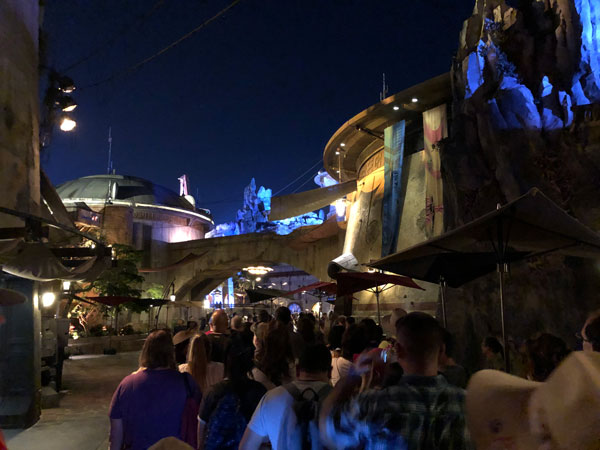
Disney’s theme parks are more popular than ever right now, and the off-season has vanished. We’ve all seen the photos of massive crowds packing the parks in early February. What happened to the slow time? Has attendance increased that much? Why haven’t the many ticket price increases discouraged guests from visiting? These are all good questions, but they sidestep possibly the most important reason that parks feel different today.
It’s easy to look at the hordes as a reflection of popularity. More people are definitely visiting the parks, but it’s not that simple. When Disney increases ticket prices, the knee-jerk reaction is to defend it by citing the crowds. I would argue that Disney’s recent choices for attractions and operations have played a key role. FastPass Plus has also dramatically changed how standby lines function. Finally, Disney has brilliantly marketed the slower months to draw more guests (especially international ones).
My focus in this article is the impact of capacity on how we experience the parks today. There is a diminished focus on keeping up the supply with the demand from current leadership. They are definitely investing serious dollars into the parks, yet the expansions don’t solve the problem. It’s a tricky situation with no easy solution but is definitely worth investigating.
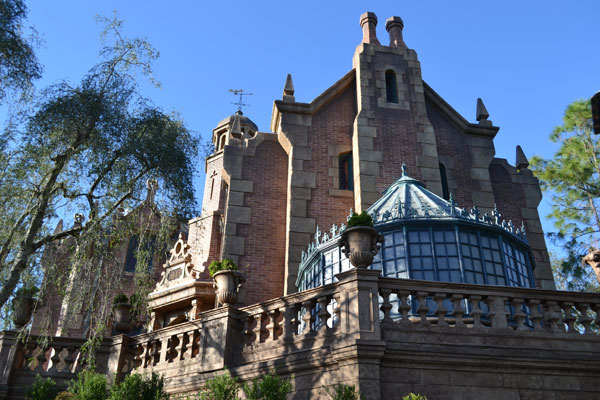
What Exactly Is Capacity?
Most fans have heard the term capacity, but it’s easy to dismiss it as just another technical aspect of attractions we love. Essentially, a ride or show can entertain a certain amount of guests per hour. When the demand for an attraction exceeds that number, a wait occurs for the people beyond the hourly total. In the days before FastPass, it was pretty easy to figure out this number — assuming full operations. Having multiple lines changes things. Even so, an attraction’s capacity still plays a huge role in its wait times.
Beyond impacting the wait, capacity also impacts many factors in the full park. If more guests are enjoying attractions, they aren’t overloading restaurants or clogging paths. When a park’s capacity doesn’t keep up with attendance increases, the guest experience gets worse. Even people eaters like The Haunted Mansion (2,400 guests an hour) can’t keep up with growing demand for the parks over the long term.
Another pitfall is looking at wait times as the sole determiners of popularity. A good test case is Frozen Ever After, which only can serve about 1,100 to 1,200 guests per hour. When compared to Spaceship Earth, which can take double that number, you could surmise that Anna and Elsa are a lot more popular due to longer wait times. In reality, the two attractions may be a lot closer in terms of demand than we suspect. This doesn’t mean no one likes hanging out with Anna and Elsa. It just underscores how we often diminish capacity as a factor.
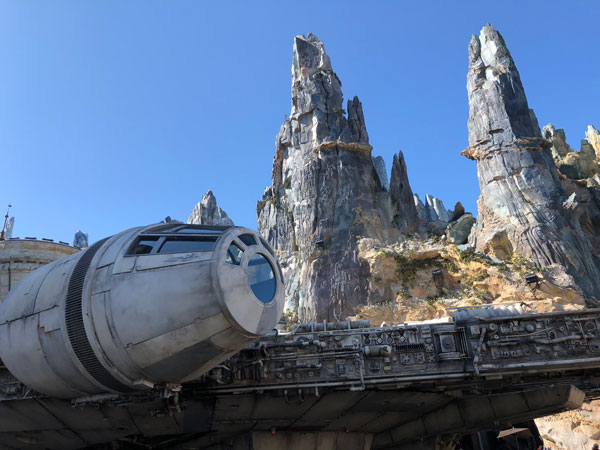
But What About All the New Attractions?
I’m definitely not here to complain about the expansions Disney is adding to the parks. They’re spending a ton of money in the next few years! The Ratatouille and TRON attractions bring new capacity to the parks, but those are the exception. A majority of these additions replace existing attractions that closed. So the overall capacity is flat or even decreases in some cases. At best, Mickey and Minnie’s Runaway Railway would match The Great Movie Ride’s huge capacity. That is a very optimistic projection too.
It makes sense that Disney would want to replace older attractions with new experiences. The issue comes with the added demand from those high-tech attractions. More people want to visit, and the park attendance rises. That’s great! But what will all these new guests do? It seems like Disney’s Hollywood Studios should have more capacity given the openings of Galaxy’s Edge and Toy Story Land. However, the additions were not designed to handle a large number of guests.
When Disney invests hundreds of millions (or even a billion) dollars into an expansion, I’m stunned by the limited capacity. The model of two attractions inside a themed land fails to compensate for the added demand for those expansions. Even a slow-moving boat ride like Na’vi River Journey maxes out at about 1,400 per hour, which falls well short of “it’s a small world” or Pirates of the Caribbean. That secondary attraction needs to be the people eater to compensate for Flight of Passage’s numbers. Both are excellent attractions, but they need a lot more help.
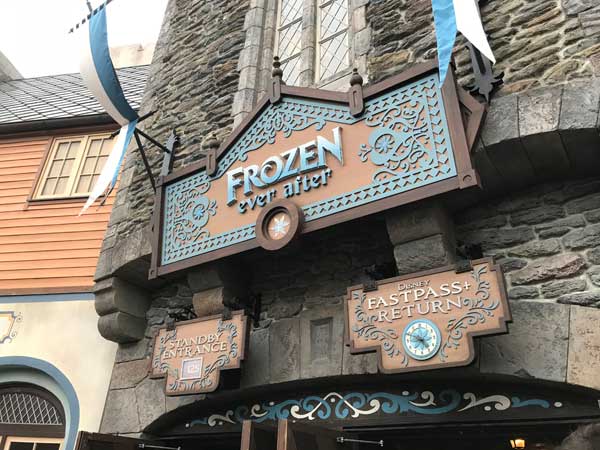
A Closer Look
When you really dig into the numbers with the recent additions, there is a trend that helps to explain the long lines and full parks. Let’s take a look at the estimated capacities for Disney’s recent additions:
- Alien Swirling Saucers – 600
- Flight of Passage – 1,280 to 1,440
- Frozen Ever After – 1,100 to 1,200
- Na’vi River Journey – 1,080 to 1,440
- Rise of the Resistance – 1,300 to 1,700
- Slinky Dog Dash – 1,440
- Smuggler’s Run – 1,700
None of the recent additions go beyond 1,700 riders per hour, which is in the middle when you look at the entire attractions lineup. Now let’s take a look at some classic Disney attractions:
- Kilimanjaro Safaris – 3,000
- Living with the Land – 2,445
- People Mover – 3,600
- Spaceship Earth – 2,400
- Space Mountain – 2,000
- Splash Mountain – 1,800
I’ll admit that I chose the best examples in the second list to make my point. I’m citing these examples to show that even with a roller coaster, log flume, and more, Disney has delivered attractions with large capacities. There have always been rides like Dumbo and the Fantasyland dark rides that don’t match these numbers, but there was a focus on capacity. This diversity of options ensured that certain lines were quieter.
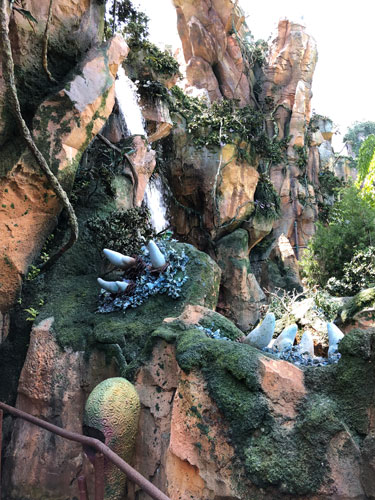
The Balance is Crucial
A super headliner like Flight of Passage is a great addition. Taken on its own, the capacity around 1,300 could still work. Disney probably should have added more theaters, but that move isn’t cheap. One reason that we saw such long lines at Flight of Passage when it opened was the lack of enough big draws in the rest of the park. Kilimanjaro Safaris and Expedition Everest are incredible, but they also aren’t new.
What saves Disney’s Animal Kingdom are its serene walking trails and other exhibits that can entertain guests. Even so, that park is falling short with its overall capacity. The situation is rougher at the Studios, which has excellent headliners but not enough complementary attractions. Epcot opened with a bunch of slow-moving Omnimovers with huge capacities. Most of those attractions are gone, however.
Another reason for the lower numbers is the shorter ride time for many recent attractions. World of Motion had a ridiculous amount of guests on its vehicles at one time. Test Track also uses the large pavilion, but its capacity is much lower. I love thrill rides and quick attractions; the trick is maintaining the right balance. The attendance increases make the variety even more crucial to avoid a total mess in busier times.
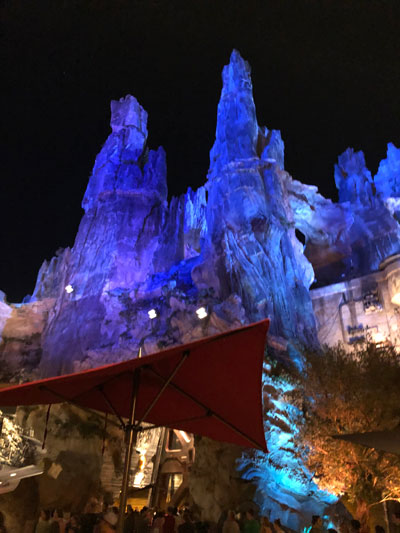
A Challenging Road Forward
I know that it’s easy for me to sit at home and talk about choices that Disney should make. I’m sure that capacity is discussed regularly when leaders consider new attractions. What concerns me is the overall trends when you look at the guest experience in the parks today. How can Disney create a better environment to warrant the higher ticket prices? The crowds are still going, but even the biggest fans may become skeptics at some point.
Let’s imagine Galaxy’s Edge with a People Mover-like attraction gliding above the land. Disney could remove thousands of guests from the paths and provide a great time. What if they added a popular draw to a different section of the Studios? Giving 5,000 guests an hour something more to do what drastically change the park. A third attraction in Pandora could have a similar impact on the Animal Kingdom.
I’m just playing armchair Imagineer here, but that doesn’t negate the key point. One of the best ways for Disney to combat the rising tide is adding capacity. They don’t need E-ticket attractions either. In fact, the gains might be offset by demand in those cases. I’d like to see more out-of-the-box thinking from Disney. There are ways to solve this problem without spending billions of dollars. Capacity is a valuable tool that deserves more attention from everyone. Let’s change the conversation!
Thanks to Tim Grassey at WDW Theme Parks for the capacity numbers.
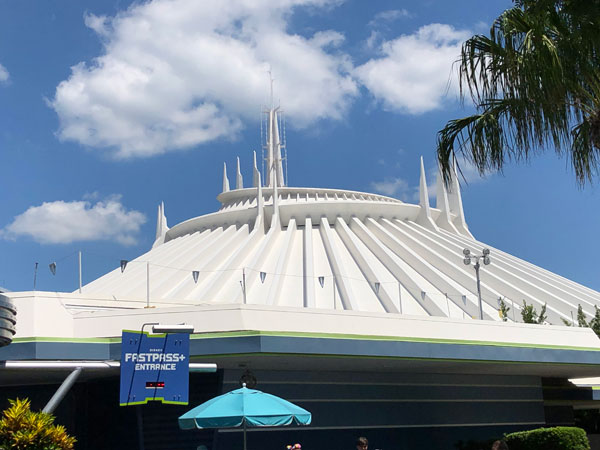
Related Articles: Capacity
Data Science and Disney: Analyzing the Future (January 2, 2019)
Ranking the Water Rides at Walt Disney World (September 12, 2018)
Why the Disney Monorail Matters (April 4, 2018)



This is a pretty interesting topic, and it’s fun to think about. A few random thoughts…
I wonder whether Tron, Ratatouille, or Guardians will have higher capacity?
I think one of the big reasons Disney doesn’t do high capacity attractions as much is because people eaters like boat rides and omnimovers have to rely on storytelling over vehicular thrills, and Disney’s basically forgotten how. They have only one trick up their sleeve: familiarity and recognition, which will get people INTO an attraction but are unlikely to satisfy after you’ve gotten off. I feel like this is why the mermaid and Nemo attractions are so underwhelming for so many. It also doesn’t help that Disney is totally anti scary now, making everything really bland.
The fact that so many people use wait times as a substitute for ride value is also fascinating. I think we Disney nerds sometimes underestimate many families’ needs to score the hot ticket fast passes and reservations, just so they can brag to their social circles. What’s hard to get becomes valuable for that reason alone. Nintendo knows this too lol
Chris, I doubt they can do too much with Tron and Guardians given that they’re coasters, but Space Mountain is pretty high, so it’s possible if done well. Ratatouille may be a better example, and that one (like TRON) is new, so that is added capacity at least. I doubt any clear 2,000 though just given the recent history from Disney.
I’d push back a little bit against your point about storytelling if you look at something like Mystic Manor (and maybe Rise of the Resistance, though I haven’t experienced it yet). But Little Mermaid and especially Nemo are great examples of dark rides that feel safe and a little dull. I also do remember being nervous and a bit scared on a lot of attractions at Disney World as a kid, even Mr. Toad’s Wild Ride. It was definitely a different era.
You’re seeing the effect of parks being managed by spreadsheets. Disney sees the feedback from guest visits and knows that a short, intense attraction generates more positive feedback (and social media postings) than “the lines were short and the park didn’t feel crowded.”
Disney also can cut capacity on attractions to save money. Touringplans suspected this in early 2018 and sent people into the park to count how many guests got off attractions per hour and confirmed it. I was there in lat January when it should be relatively quiet and found longer waits than expected (35 mins for the peoplemover?!?) I wouldn’t be surprised to find that Disney is doing the same again in some of the parks.
Good points, Dean. I spoke to Len Testa about those tests back in 2018 on the podcast. From what I remember, it was like 20% of the capacity that was being used for Space Mountain according to their tests. I also noticed strange trends with The People Mover in 2018 where they were only filling about 1/2 the cars. That led to an actual line of 15 minutes (not 35, thankfully) that was much more than necessary. I would hope that Disney realized that wasn’t a wise idea given all the bad press, but we can’t be sure. Also, I don’t mind some shorter attractions (Flight of Passage is the perfect length for what it is), but it would really help to have more balance with some of the newer attractions. There had to be ways to make Na’vi River Journey take larger crowds. Of course, I’m not sure that’s a major goal at this point from what I’ve seen. Thanks!
You have to include the length of a ride’s line in a capacity measurement. Operationally, there’s no difference between someone being on a ride for 5 min and in line for 15 versus a walk-on 20 min ride.
I’ll use Great Movie Ride vs. Mickey and Minnie’s Runaway Railway as an example. I’m approximating as well. GMR hourly capacity was about 2400, MMRR 1800. GMR was 20 min long, MMRR 5. So at a given time you have 800 people on GMR, and 150 on MMRR. Say a FP+ queue is 15 min (big approximation here). And that it’s 2/3 of capacity. so 0.25*1600 = 400 in the FP+ queue for GMR, 0.25*1200 = 300 in MMRR. So we’re at 1200 GMR, 450 MMRR. Now what about the standby queue? For the Sunday of President’s Day weekend 2017, GMR had about a 45 min wait. 0.75*800 = 600 people for 1800 total at GMR. That day this year saw Slinky Dog & Rock n Roller coaster sport 135 min waits. 2.25*600 = 1350. GMR: 1200 + 600 = 1800 guest-hours, MMRR: 450 + 1350 = 1800 guest-hours.
Even though MMRR has 25% lower hourly capacity, and is 1/4th the time on the attraction, it will have similar actual capacity. If the FP+ line moves faster than 15 minutes, then the data would skew towards MMRR. Also, 45 min waits for GMR were uncommon, but 2 hr + for MMRR could be around for a while.
Where MMRR will really help is in overall tier 1 FP+ availability. For a 12 hour operating day, you have about 12,000 SDD FP+, and about 14,000 MFSR FP+. That’s only 26,000 while DHS’s average attendance in 2018 was around 30,000. That’s 4,000 people missing a tier 1. Add in another 14,000 for MMRR, and you’ve got 40,000, which is probably a shade over what DHS will see on slightly above average crowd days. It’ll also leave tier-1’s available on slow days, or you’ll have people park-hopping with DHS as their first stop – for many trying to get Rise of the resistance boarding groups, that’s what they’re doing already.
Sorry for the rant. I’ve compared other rides similarly, and the new popular rides come out pretty well. If you look at Flight of Passage and Rise of the Resistance, they’re driving traffic to parks. Epcot will benefit greatly from the Guardians coaster and Ratatouille.
One change I’d like to see to the FP+ program would be to not have them the first and last hours of the day. This would allow the standby queues to move 3x faster. This already happens when there’s EMH, but would be nice all the time. Disney needs those tier-1 FP+ as that drives a lot of people to book on property.
Jim, thanks for the all the info. You bring up a lot of good points, especially in terms of the queues. To cite your example, what I really would have liked to see is to have MMRR brought in as an additional attraction. Disney could have done a substantial update to the GMR (connected it more to Disney films, new effects, etc.), and kept the capacity. I suspect they wanted Mickey in the central spot in the park, but having that extra 2,400 or so would have been helpful.
I agree that Tier 1 will be a lot better now at the Studios. It was already better with Smugglers Run in there and others like Tower of Terror finally getting back to Tier 2. Adding MMRR will help even more. It was a mess with really only Star Tours as something valuable in Tier 2 for a little while.
I’m totally with you not having FP for the first and last hour of the day. The last one especially would be great to see. I understand the value of FastPass Plus, especially with my girls not being early risers. That’s an improvement over paper FastPass for my family. But moving it to so many attractions was disruptive to a lot of the people-eating attractions.
So, it was my girls too that showed me the real value of FP+. People who like to sleep in, or relax in the AM can still get a huge benefit. People like to poo-poo having to play 6-+ days in advance, but how about waking up 1-2 hrs before park opening every day on your vacation? My wife would gladly trade the planning for the sleep – especially if it’s me doing the planning!
There will forever be a trade-off of simply adding new attractions vs. replacing. Galaxy’s Edge & Toy Story Land took away the Honey I Shrunk the kids playground (we never got to experience), and the Osborne lights. Specifically to MMRR vs. GMR, the footprint of the GMR is bigger than Toy Story Mania. It would have been a significant demo to clear area for it as an addition.
DHS is swamped now. What will really help them is to get Rise of the Resistance close to full operating capacity, and more park hours. The EEMH from last fall would be welcomed now. People are at the park anyway at 6 AM, let them ride almost everything before they need to get boarding groups at 9. I think one morning I got 11 rides in before 9!
I went to the EEMH in September to see Galaxy’s Edge, and I did so much in that first three hours! Did Smugglers Run four times (3 single rider), all the headliners with no wait, and had time to eat breakfast and go to Oga’s. It was awesome. Of course, it was also a pretty dead time of year. I know it’s must different now with Rise of the Resistance open.